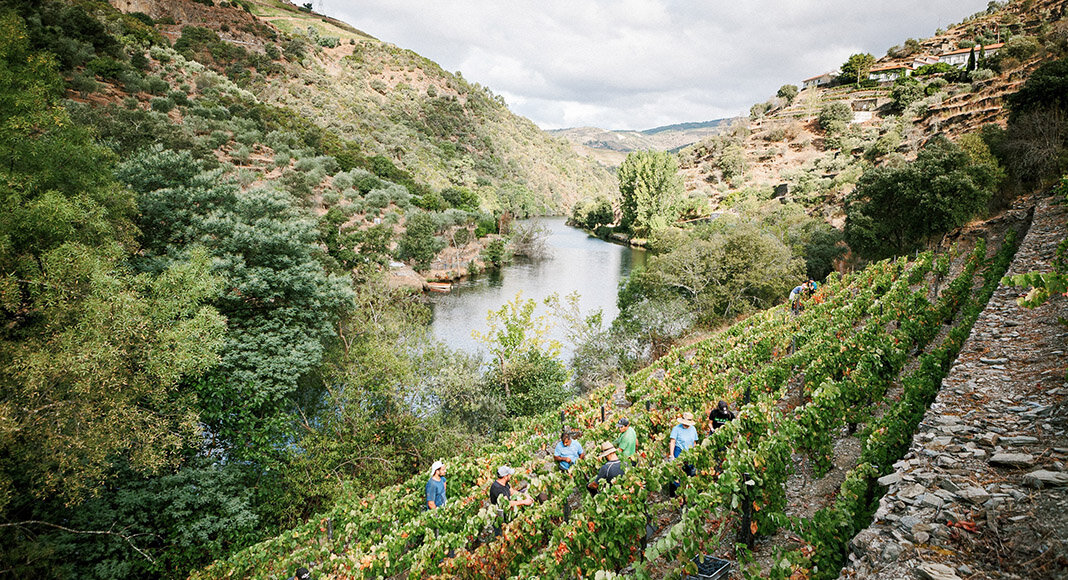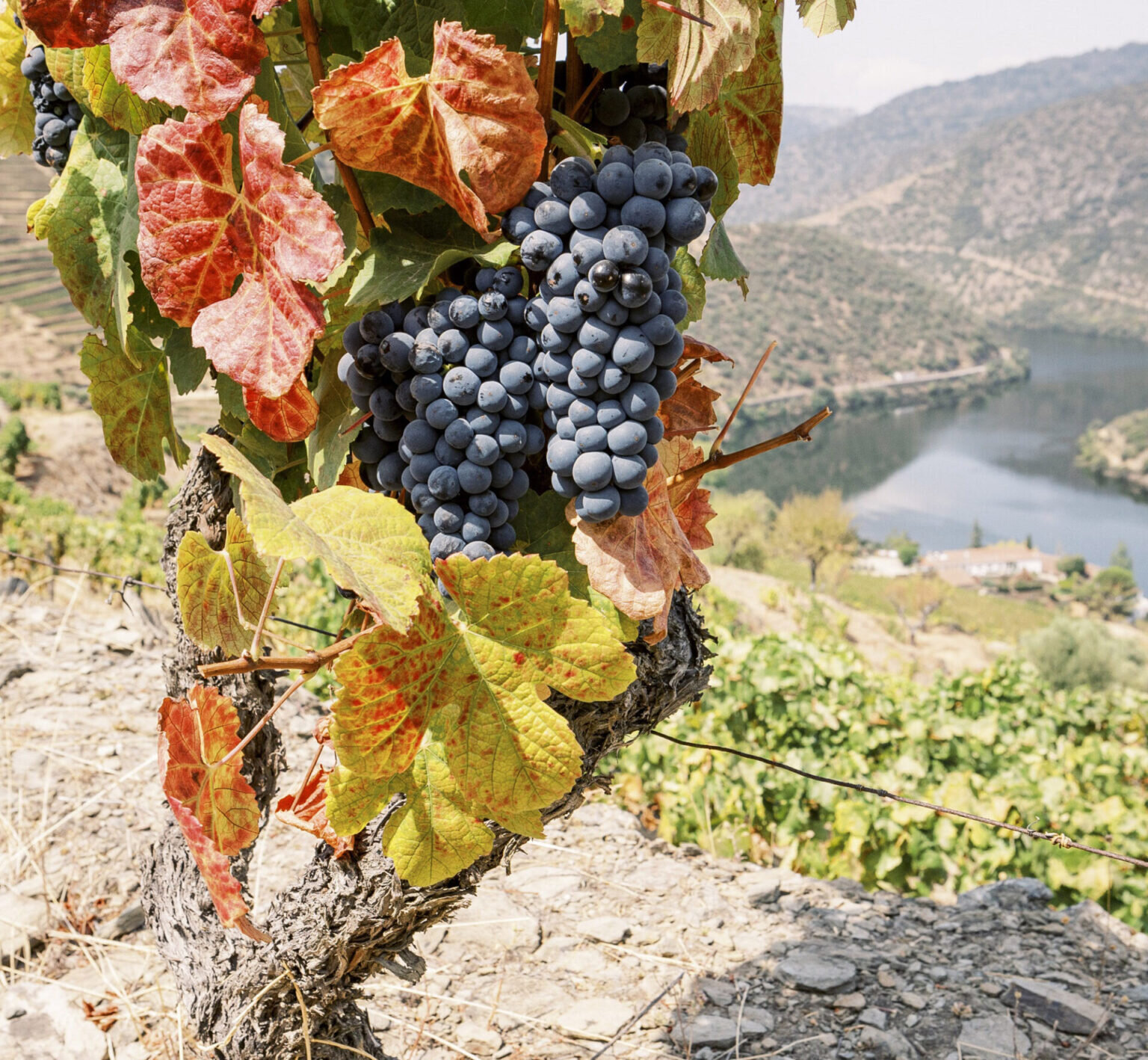2021, a promising year for port
Croft, Harvest 2021, Quinta da Roeda - Pickers picking grapes Photos: The Fladgate Partnership
The world’s largest mountain vineyard with 44,000 hectares under vine, the Douro Valley today produces some of Portugal’s best dry wines. It is also the region where grapes are grown to produce port, arguably the noblest of all fortified wines. The Fladgate Partnership owns some of the greatest port houses, brands such as Taylor’s, Croft and Fonseca.
The Resident recently joined a Virtual Harvest Press Trip, hosted by Adrian Bridge, CEO of The Fladgate Partnership, and David Guimaraens, the company’s Technical Director and Head Winemaker, the man responsible for making some of the very finest vintage and old tawny ports of the last 20 or 30 years.
Croft, Harvest 2021, Quinta da Roeda – Pickers picking grapes. Photos: The Fladgate Partnership
Leading us on a journey around the terraced vineyards of the Douro, Bridge and Guimaraens discussed the challenges of producing and selling wine during a global pandemic, on a planet where all agricultural activity is being affected by climate change. As they spoke, the Douro became an exemplar for wine regions all over the world, and port a style of wine that competes in a competitive drinks industry.
During the lockdowns of the last 18 months, sales through bars and restaurants (the on-trade) have suffered, in all markets, while sales for home consumption through supermarkets, off licences and, increasingly, on-line shops (the off-trade) have remained strong (perhaps surprisingly so).
Bridge explained, in 2020, sales of their ports had been badly hit in Portugal (40% down), with vastly fewer tourist arrivals. Other markets, however, such as the US and UK, have remained resilient, as port is seen as a warm, comforting drink to enjoy at home at times when people are feeling a little sad. Bridge expects overall sales of their ports to increase by over 10% in 2021.
Fonseca, Harvest 2021, Quinta do Panascal – Pickers picking grapes. Photos: The Fladgate Partnership
How about winemaking? Guimaraens stressed the unpredictability of climate change. The last four years in the Douro have been hot, extremely hot. This year saw a return to more ‘normal’ temperatures, sparing the grapes the sun burn which shrivels fruit and leads to lower yields.
Vines prefer the vigour inducing challenge of a cold winter; last winter, however, was unusually mild, followed by a growing season which began dry, always good news from a disease-control perspective, avoiding the frosts that damaged many Northern European wine regions. This good start was interrupted by aggressive hail storms in June, however, and the September harvest by heavy rainfall, which led to a several-day pause in picking to allow vineyards to recover and grapes to resume ripening.
Picking in the Douro Valley generally begins up towards the Spanish border, the hottest part of the region, before continuing downstream to the ‘cooler’ Cima Corgo. Low-lying vineyards, close to the Douro River, are picked first, vineyards with altitude later, and white varieties generally picked before red.
Adega da Quinta da Vargellas. Photos: The Fladgate Partnership
On the day of this virtual press call, September 21, many of the Fladgate’s vineyards still remained to be picked. This year, fortunately, ripening and the consequent picking dates were spread out across the valley. Guimaraens dreads years when too many vineyards need to be picked simultaneously, causing labour congestion and awkward picking priority choices. In viticulture, you need to pick as soon as your grapes are ripe, no later, to avoid excessive sweetness.
Labour has become a critical issue of increasing concern to wine producers each year. There is currently a worldwide shortage of pickers, a shortage compounded by travel restrictions. Understandably, wineries prefer to work with seasoned rather than inexperienced labour.
Over the last five years, Portugal has seen a much-needed 40% rise in the minimum wage, but this rise has generated a high increase in labour costs for a wine region where almost all picking has to be done by hand due to the mountainous topography.
Taylor’s, Harvest 2021. Quinta de Vargellas – Grapes on vine. Photos: The Fladgate Partnership
What kind of ports can we expect from the 2021 harvest? Guimaraens described the 2020 ports as extremely concentrated, sometimes even ‘jammy’. The 2021 ports will be characterised by full flavour, elegance, rich fruit and freshness. In response to changing consumption habits, and as part of a drive to diversify port’s appeal and attract younger consumers, the company will be making more white and pink ports. This year Taylor’s launched a ready-mix white port and tonic, while Croft launched a ready-mix pink port and tonic, both drinks sold in a can.
Originally published in Portugal Resident, October 2021






